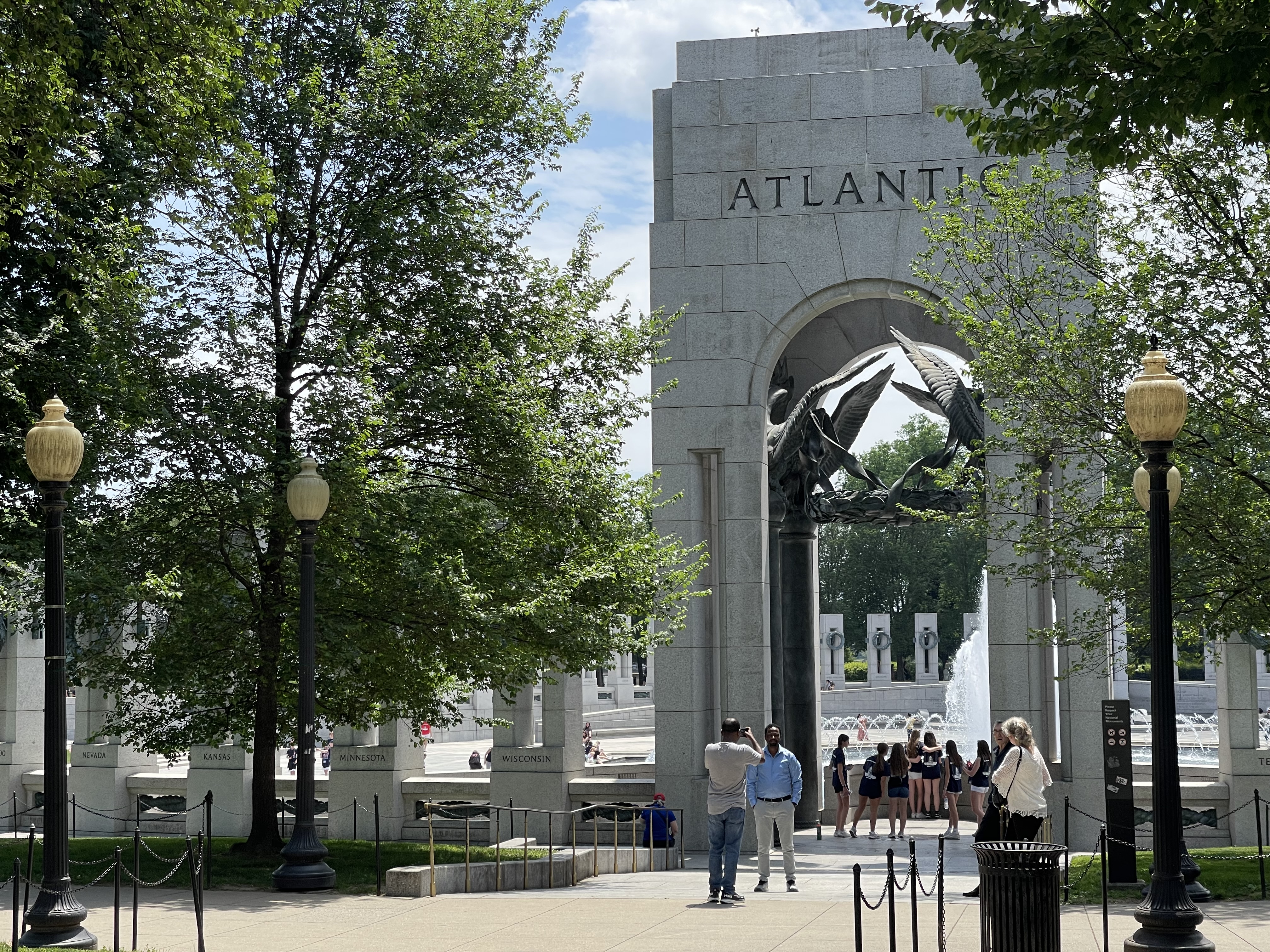
Memorials connect us to the gravity of our past
Post filed in:
In the early 1990s, many World War II veterans were aging, and the public’s call to honor those who had died was growing stronger. As the first federal agency in a chain of partners responsible for creating memorials, GSA was eager to respond.
The American Battle Monuments Commission (ABMC) asked GSA to help build a memorial dedicated to the men and women who died fighting in World War II, a place to grieve, remember and honor.
“Knowing that more than 1,100 World War II veterans were dying each day, the project team was committed to completing the memorial on time—and on budget,” editors wrote in the GSA Design Awards report for 2004. “By maintaining a strict construction schedule and meeting every challenge, they were able to open the memorial a month before its dedication.”
The design team was driven to achieve the goal of completing a place for everyone to honor those who made the ultimate sacrifice: When the memorial was completed a month ahead of schedule, it had not exceeded the $16 million in federal dollars and the $181 million in private donations budgeted for the project.
Since its official dedication that Memorial Day weekend in 2004, nearly 81 million people have visited the memorial designed under GSA’s Public Building Service’s Design Excellence Program.
Between the Washington Monument and the Lincoln Memorial next to the Reflecting Pool, the memorial honors:
- 16 million veterans who served in the U.S. armed forces during World War II.
- More than 400,000 who died.
- Millions who supported the war effort from home.
The design competition
ABMC teamed up with GSA’s Office of the Chief Architect to find a design. In April 1996, GSA announced that the design entries would use the typical GSA competition standards of reviewing known lead designer, architect, and engineer teams. However, many people thought that approach was too restrictive, so GSA opened the contest in June 1996 to all U.S. citizens 18 and older.
GSA and ABMC kept the deadline of August 12, 1996, just two months away.
The competition garnered 406 entries from across the country. Friedrich St. Florian’s design was chosen.
“Rarely does a project inspire everyone associated with it to rise to a higher level than they thought possible,” commented a 2004 GSA Design Award juror. “Their collaboration and the manner in which they resolved issues kept the project on track and completed it with a level of quality that will last for generations.”
In 2004, there were 5.7 million WWII vets, according to an U.S. Census report published in 2020. Today, there are fewer than 500,000.
Other nearby war memorials honor fallen
In 1981, Maya Lin received international recognition when the architecture student at Yale University won the open, anonymous design competition sponsored by the Vietnam Veterans Memorial Fund for the Vietnam War Memorial, which honored the 58,000 service members who died in that conflict. While some critics assailed Lin’s age, gender and race, as well as her simple, non-traditional design, according to a Library of Congress blog post, others regard “The Wall” today as a place for healing for many Vietnam veterans, their families, and friends.
Lin later designed two works for GSA: Flutter at the Wilkie D. Ferguson Jr. U.S. Courthouse in Miami and Sounding Stones at Daniel Patrick Moynihan U.S. Courthouse in New York City.
The nearby Korean War Veterans Memorial, dedicated on July 27, 1995, commemorates the 5.8 million who served in the U.S. armed forces during the Korean War.
Like the Vietnam Memorial, this memorial, established by ABMC and administered by the National Park Service, also sits near the Lincoln Memorial on the National Mall. More than 4 million visited the memorial in 2022, honoring the 36,574 American service members and 7,114 members of the Korean Augmentation to the United States Army (KTUSA) who gave their lives defending the people of South Korea.
According to the National Parks Service, the memorial’s design became the work of several architects. After an eight-month design competition, the ABMC competition presented a winner in 1989; however, it took the National Capital Planning Commission nearly three years to approve a design and resulted in a different team of architects.

 U.S. General Services Administration
U.S. General Services Administration
